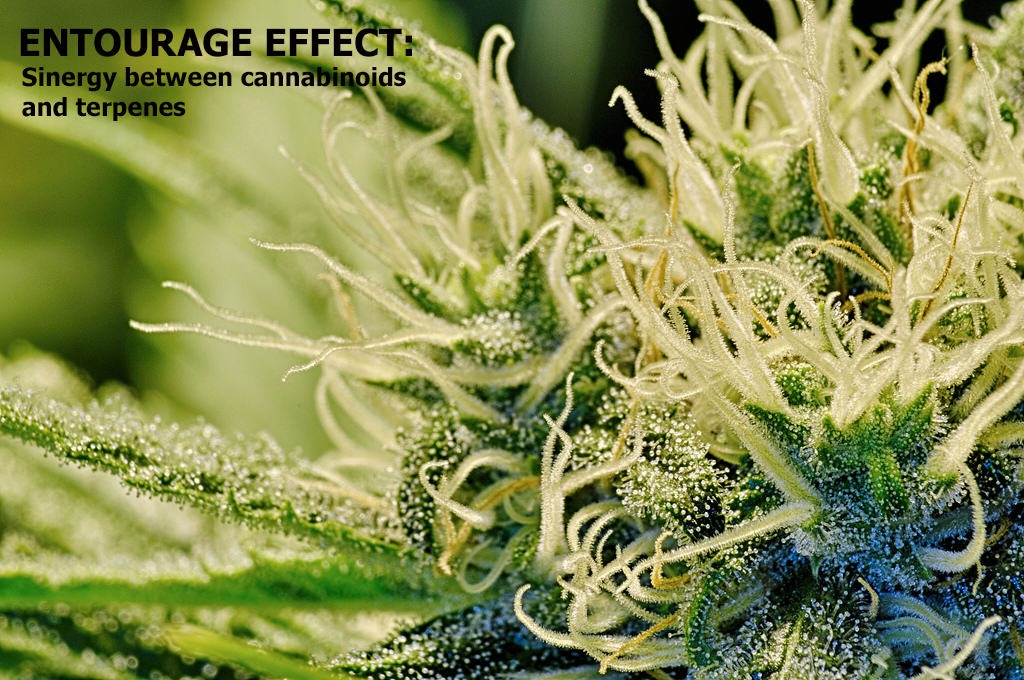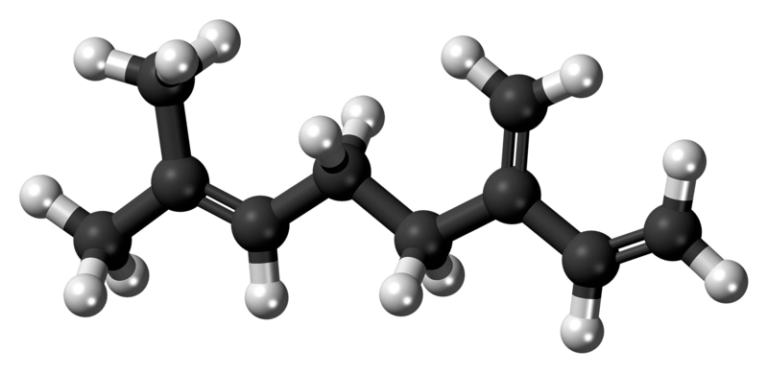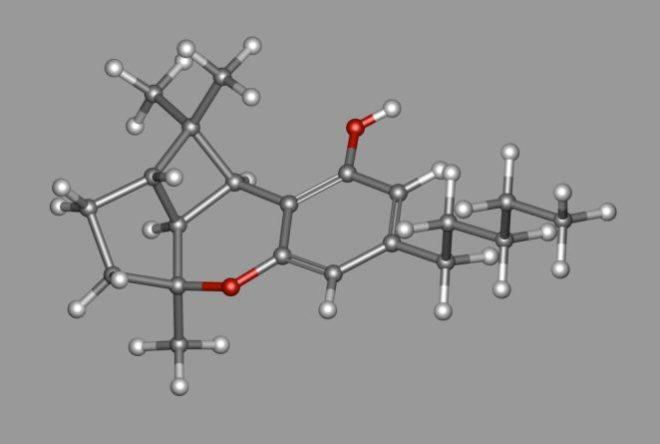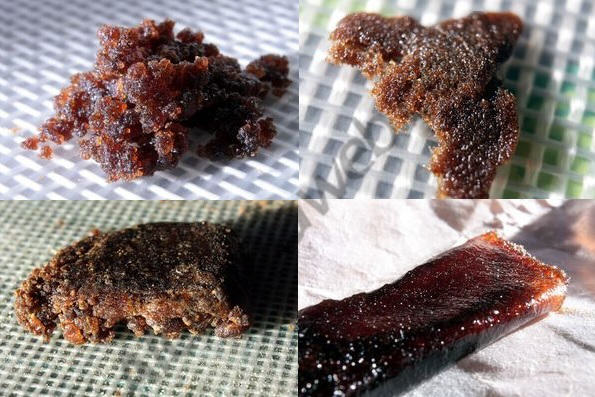Cannabis Tests: What do cannabinoid and terpene percentages mean?
List of contents
Have you ever wondered what those numbers you see on the labels of your favorite cannabis strains really mean? What exactly does it mean that a genetic has more or less % of a compound such as THC or CBD? Those cannabinoid and terpene percentages aren't just random numbers; In reality, they are like the DNA of your weed, and today we are going to tell you why!
When you choose a strain with high levels of certain cannabinoids or terpenes, you are making a decision about what type of experience you expect, whether in terms of psychoactive effect or the taste and aroma of the buds you will harvest. Whether you're looking for a euphoric high or a more relaxing effect, those numbers help you find the perfect weed for the perfect moment. Well, today we're telling you what these numbers mean and what you can expect from them, so next time you're faced with a list of percentages, you'll know exactly what to expect when you roll your joint!
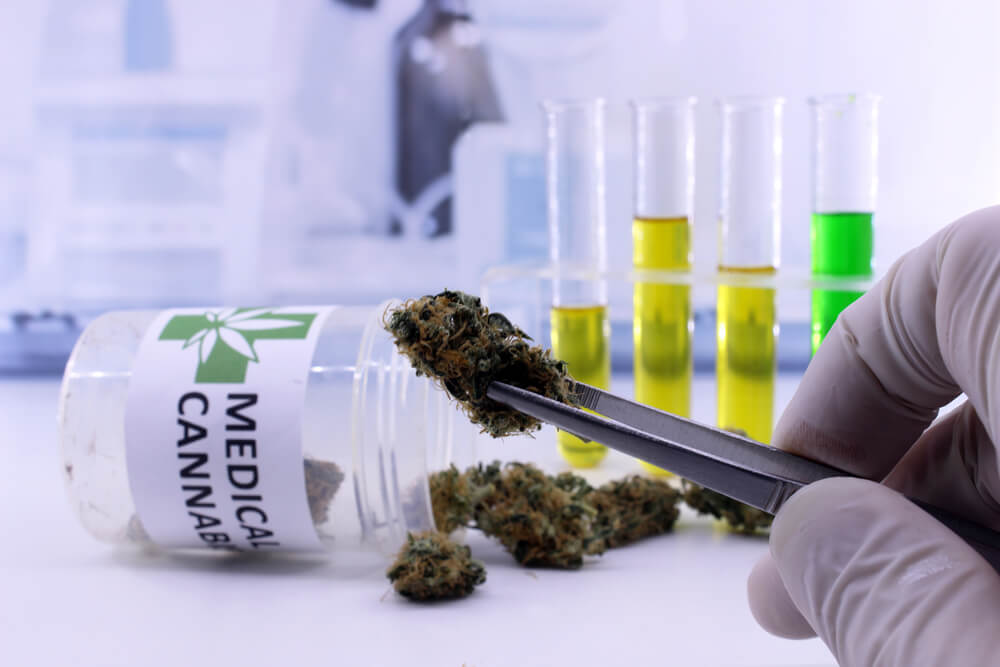
Cannabinoids and terpenes in cannabis
Let's start at the beginning...where is all the magic of cannabinoids and terpenes in cannabis plants? Well, these compounds are formed in small natural factories inside the plant, which are like tiny chemical laboratories. Cannabinoids, like THC and CBD, are produced in tiny structures called trichomes, these shiny little resin glands that cover the flowers and leaves of your plants. Within these trichomes, the compounds that you often hear related to cannabis and that give it both its effect and its aroma and flavor are produced and stored, that is, cannabinoids and terpenes.
So the next time you look at a cannabis flower and see those shiny glands, similar to little lollipops, remember that inside them are being made all those magical molecules that make cannabis so special. However, and as it is logical to think, a cannabis plant cannot produce "infinite" trichomes but is limited by several environmental and genetic factors. Thus, one plant may not produce as many trichomes as another, so the cannabinoid and terpene contents will probably be lower.
Cannabis trichomes under the electron microscope
Have you ever imagined what cannabis would look like if we were very, very small? It is an interesting question that different researchers, fortunately, have decided to take on using different microscopy techniques. And not only for the aesthetic appreciation of the resulting images, but also to discover one of the best-kept secrets of the plant: how the trichomes behave like tiny biochemical factories to store the valuable compounds they produce.
However, be careful, because the fact of producing more or fewer trichomes has no direct relationship with the number of compounds produced so that you can find plants with less resin than others but that have a more powerful effect or a more pronounced aroma. This is why some plants are preserved in clone form like gold, because their cannabinoid or terpene profile has turned out to be extraordinary and people do not want to lose these qualities, which are so difficult to find.
Cannabis testing, what is it and what information does it give us?
Have you ever wondered how scientists find out what's really in your weed? Well, here we explain it to you! There are several methods used to determine the amount of cannabinoids and terpenes in cannabis, from at-home options to spectacular testing machines. Below we will tell you a little about some of them. First, there's the Beam test, which sounds like something out of a science fiction movie but is actually a technique that measures the absorption of ultraviolet light by cannabinoids. Although it is a relatively simple method, it is not very precise and is usually used basically to determine if a plant is rich in CBD or not.
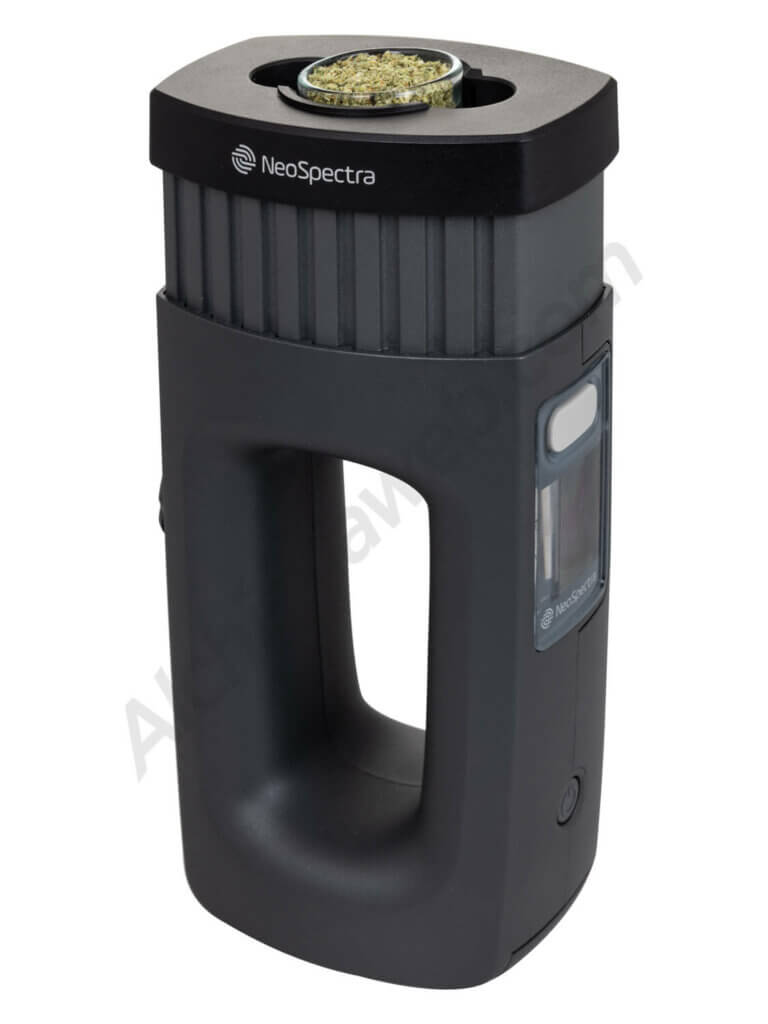
Then there is thin-layer chromatography, which is a way to separate and detect different compounds in a cannabis sample. Its main advantage is that more cannabinoids can be detected than in the previous case, although it still serves more as a guide than as a truly precise method to measure the content of these compounds in a sample. Next, we have infrared spectroscopy, which although it sounds like an experiment by Bruce Banner himself, is actually a technique that uses the absorption of infrared light by compounds to identify them. If you've ever seen a small, portable machine that analyzes buds in just seconds, it was probably an infrared analyzer like Neospectra.
As a more reliable method, we have high-performance liquid chromatography, or HPLC, a very precise way to separate and measure the components of a cannabis sample. Last but not least, there is gas chromatography, which has nothing to do with flatulence but with a very precise separation technique that scientists use to analyze cannabinoids and terpenes in samples of our beloved plant. So you see, there's a whole arsenal of scientific tools working hard to discover what's really inside your favorite herb!
What do the percentages of cannabinoids and terpenes in cannabis mean?
Surely you have noticed those percentages that are usually present in the descriptions and packaging of cannabis seeds, and that usually refer to cannabinoids such as THC and CBD, the main compounds - psychoactive and non-psychoactive respectively - produced by cannabis. You may have even seen complete analyses like this one:
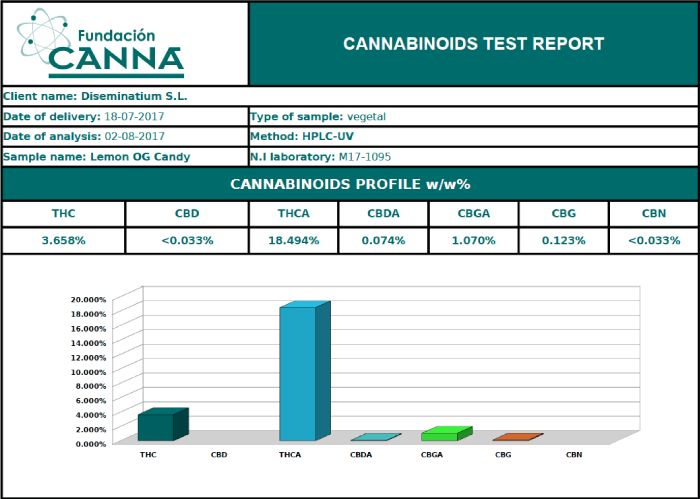
As you can see, these percentages are usually presented as percentages, so that after analyzing a sample we know with more or less accuracy (it will depend on the analysis method) the amount of each compound present in the sample. As you can see in the image above, these percentages indicate the amount of each compound, but they express it as a percentage, which can lead to confusion. For example, and if we look at the analysis that we have taken as an example, you will see that in this case, the sample analyzed contains 3.6% THC and 18.5% THCA, which gives a total result of approximately 22% THC.
When analyzing a flower or an extract, the molecules are found both in their active or decarboxylated form (in this case, THC) and in their acidic form (THCA), which will become active when smoking or vaporizing. It is for this reason that both values (THC and THCA) are added to find the total content of this particular cannabinoid, in this case, as we have seen, close to 22%. The same would happen with CBD, although in this case, the content is barely noticeable. However, if you look at the total CBG content (CBG + CBGA) it gives a content greater than 1%, which is relatively high in this type of THC-rich plants like Lemon OG Candy.
But...what exactly does this percentage mean? What is it measured against? Well, it is measured with respect to the weight of the dried flower analyzed; Indeed, when you see a percentage of THC, CBD, or other compounds, you are looking at the amount of those compounds present in relation to the total weight of the flower. For example, if you see that a strain has 20% THC, it means that for every 100 grams of that weed, 20 grams are THC.
The entourage effect and its role in the cannabis effect
By now you're probably familiar with the term "entourage effect" in reference to the type of effect that cannabis produces. The entourage effect is like a big party in your brain but with cannabinoids and terpenes as guests of honor. It turns out that cannabis is like a super elaborate cocktail, with a lot of different ingredients; Exactly, the different cannabinoids and terpenes. Cannabinoids are like the stars of the show, responsible for providing a psychoactive charge to your buds.
The Entourage Effect: Synergy between cannabinoids and terpenes
Cannabinoids, terpenes, flavonoids and other compounds act together to modulate the effects of the cannabis plant in a synergy called "Entourage Effect". In this article we tell you more about this interesting phenomenon.
But then you have terpenes, which are responsible for providing aroma and flavor to plants. But be careful...these compounds enter into synergy and interact with each other to modulate their respective properties! Indeed, and although it may seem crazy, when you combine all of these compounds, you get something greater than the sum of its parts. Thus, these compounds work together to modulate the final effect of the plant, creating a unique and personalized experience for each person who smokes it.
Basically, what we are trying to explain to you is that THC % can give clues as to whether a plant will be more or less potent, but you cannot establish exactly to what extent it will be until you test it in combination with the rest of the compounds present in your flowers. So yes, you may experience stronger sensations with a variety with 20% THC than with another with 28% THC, since the percentage of this cannabinoid does not alone determine the potency of the flower.
So the next time you find yourself enjoying some good buds, remember to thank all those cannabinoids and terpenes for their incredible teamwork. They are the real responsible for what you are experiencing!


















































